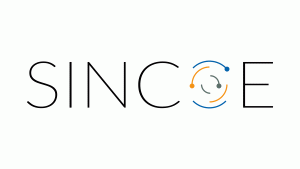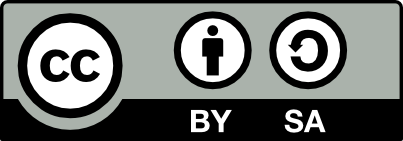Home » Articles posted by Juan A. Marin-Garcia
Author Archives: Juan A. Marin-Garcia
Supporting Complex Problem-Solving: Using the Triple Diamond Model in Education
As the processes/problems posed to students become more complex, structured methods that support the different phases, from problem identification to action plan creation, become more necessary. It is recommended to use a reference framework to guide students’ innovation process, in which divergent activities (opening options/generating alternatives/creativity) alternate with convergent activities (filtering and selecting options/critical thinking) […]
Innovation competence memory game
This online memory game is designed to teach innovation competencies. In the game, players must match cards containing innovation competencies with their corresponding descriptions. When a correct match is made between a competency and its description, the cards turn grey. The game was developed as part of the Erasmus+ funded SINCOE project with the aim […]
Group work self-evaluation assignment
What The statements below describe various innovation competencies that are useful both in studies and in working life. Go through the statements and think about how the innovation-promoting abilities described in the statements have come to the fore in your group work for the course. Do you yourself see a connection with innovation activities more […]
Using Sincoe@ Assessment Tool and persona canvas in tutoring
WHAT This is a brief instruction, how to enrich tutoring by Sincoe@ Assessment Tool and persona canvas. WHY Using innovation competences self-assessment and persona canvas combined may help in communication with student by focusing in separated areas (competences, interests, personality qualities etc.) instead of one big formless mass of things from different levels in life. […]
Creating Student Personas for designing better courses for different students
This is a brief instruction on how to use student personas to make sure that your courses and teaching are in parallel with your different students. WHAT Personas is a method that is used in service design for designing better services for the users, people. Basically, in the same way, personas can be used as […]
Practical recommendations for remote meetings
You don’t need to follow all of them, but the more recommendations you can meet, the better your experience during the meeting will be. This applies to any remote meeting in professional work contexts. Physical Space Find a quiet and well-lit place Ensure good ventilation in the space Avoid spaces with echo or background noise […]
Student role cards
Here are brief instructions for the teacher using the student role cards: What: The student role cards exercise involves assigning specific roles to students within a group project. Each role has distinct responsibilities that contribute to the overall success of the project. Why: This exercise helps students develop innovation competencies such as critical thinking, initiative, […]
Enhancing Team Competencies: A Case Study on Motivating Students, Peer Assessment with Sincoe@, and Mapping Team Roles to Innovative Outcome. Extended description
Objectives: This pilot focuses on three aspects of the SINCOE project: Activating learning and teaching methods to involve and motivate students Efficient assessment methods and tools to involve and motivate students Test the Self and Peer assessment tool SINCOE@ with students In this pilot we want to: Check if the “talent selection dynamic” allows for […]
Enhancing Team Competencies: A Case Study on Motivating Students, Peer Assessment with Sincoe@, and Mapping Team Roles to Innovative Outcome
Keywords: Active learning, Sincoe@ self-peer assessment, team role dynamics, innovative behavior, engineering education. The motivation behind this initiative was to engage and motivate students, test efficient assessment tools, and analyze team performance based on personal competencies and roles. Through classroom workshops, the implementation of the Sincoe@ tool, and the use of the Belbin model, the […]
Apply SINCOE@ Assessment Tool as a feedback tool for student project-based learning
Keywords: ASSESSMENT, innovation competence (critical thinking, creativity, initiative, teamwork, networking), project-based learning, online, external supervisor, motivation, feedback, complimentary evaluation This experience aimed to use the SINCOE@ Assessment tool as a feedback tool for student groups solving a specific problem. The project owner met the student groups face-to-face only at the beginning and end of the course. Otherwise, the guidance […]
Critical Thinking. Easy exercise
Why Critical thinking hinges on the kinds of questions we ask. If you just give an answer when asked, it means you’re just repeating what you know without much thought. But if you respond to a question by asking more questions, it shows you’re really thinking it through. This approach means you’re not just taking […]
Peer assessment as a pedagogical activity
A structured approach to incorporate peer feedback and evaluation in the learning process Peer assessment specifically focused on innovation competencies helps students understand and evaluate the creative, critical thinking, initiative, teamwork, and networking aspects of their colleagues’ work. This process enhances both the assessor’s and the assessee’s understanding of innovation in engineering practice. Setting Up […]
Asynchronous remote teaching
Each participant connects to the digital resources or devices when they select, without expecting to receive an immediate response or observe activity from others. Examples of remote asynchronous teaching include accessing pre-recorded lectures or instructional videos that can be viewed at any time; engaging in online discussion forums where participants post and respond to messages […]
Synchronous remote teaching
All participants are simultaneously connected to digital resources or devices, allowing each individual to observe the actions of others in real-time as they are being performed (or with a minimal delay of only a few seconds). Examples of synchronous remote teaching include live online classes where students and instructors interact in real-time through video conferencing […]
Face-to-face teaching (in-person)
A meeting in the learning process with more than two people, all present physically and in a synchronous format. This can occur, for example, in a classroom where the teacher and the students are all in the same physical space and communicate in real-time. It can also include individual or group tutorials where participants gather […]
Context definition tab
Please describe the environment where the learning experience takes place. Capstone Courses and Projects Collaborative Assignments and Projects Common Intellectual Experiences Diversity/Global Learning ePortfolios First-Year Seminars and Experiences Learning Communities Service Learning, Community-Based Learning Undergraduate Research Writing-Intensive Courses
Ice-breakers for on-line class
Virtual Ice-Breakers for Online/hybrid Classes “Three Things About Me” (Two Truths and a Lie) Each person shares three facts about themselves. Two are true, one is made up. Others must guess which one is the lie. “What’s Near You?” Ask your students to quickly find an object in their surroundings that has special meaning or […]
Hybrid teaching environment (hybrid)
Some participants, either faculty or groups of students, are physically present in a face-to-face setting, while other participants are simultaneously engaged in synchronous remote teaching. This means some class attendants are in person, while others are remotely in real-time. Examples of simultaneous remote and in-person teaching (hybrid) can include a classroom setting where some students […]
What is Innovation Competence?
The ability to create, introduce, adapt, and/or apply a beneficial novelty in any part of an organization. That is to say, being able to introduce something new (an idea, a method or process to do something, or a device, or an invention) or the useful improvement of something that already exists and adds value […]
References
Cheng, C. Y., & Chang, P. Y. (2012). Implementation of the Lean Six Sigma framework in non-profit organisations: A case study. Total Quality Management & Business Excellence, 23, 431-447. Clune, S. J., & Lockrey, S. (2014). Developing environmental sustainability strategies, the Double Diamond method of LCA and design thinking: a case study from aged care. […]




